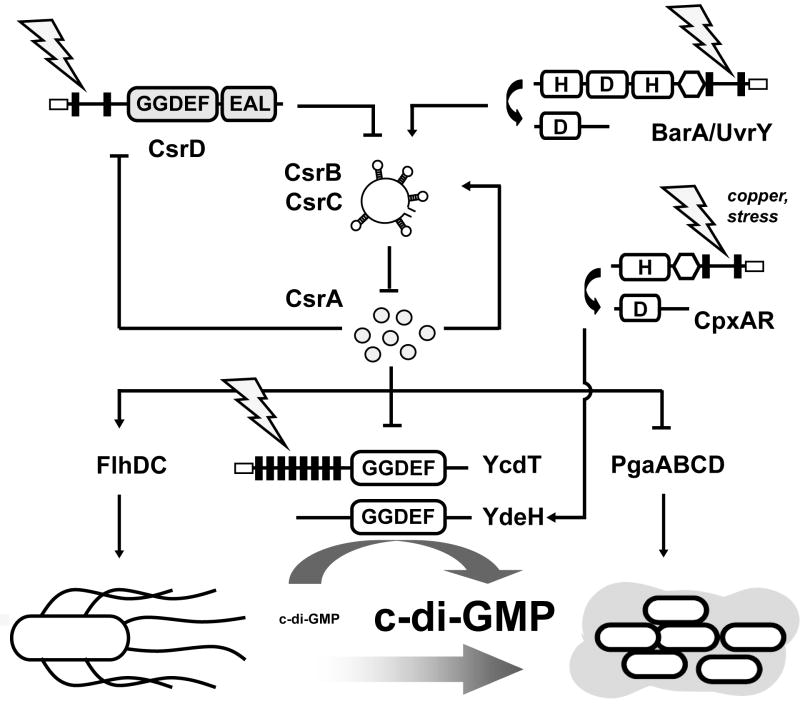Figure 9.
Schematic view of the interconnection between Csr and c-di-GMP signalling in E. coli. The activity of the central player CsrA is controlled by the sRNAs CsrB and CsrC, which are regulated by the BarA-UvrY two-component system and CsrD, a GGDEF-EAL protein not involved in c-di-GMP metabolism. CsrA directly acts on motility and biofilm formation, by controlling mRNA levels of flhDC and pgaA, respectively. In addition, CsrA controls indirectly the switch between a motile and a sessile life style by regulating the levels of c-di-GMP through post-transcriptional regulation of the GGDEF proteins YcdT and YdeH and possibly additional proteins with GGDEF or EAL domains. Signals from the outside controlling the CsrA and c-di-GMP specific adaptive responses are integrated through the BarA-UvrY TCS and possibly through CsrD and YcdT. Transcription of ydeH was shown to be controlled by the CpxAR two-component system in response to cell envelope stress and external copper.

